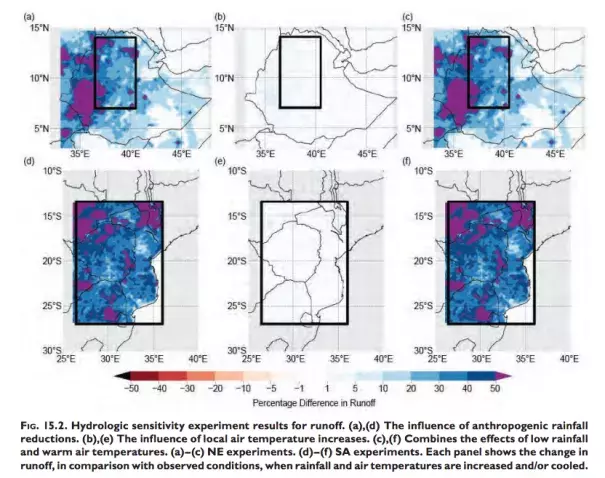Maps: Difference in runoff due to rainfall reductions and temperature increases

Study authors performed four hydrologic experiments using the variable infiltration capacity (VIC) model. In these experiments, the authors drove the VIC model with:
(i) observed weather forcings,
(ii) weather forcing in which we increased NE/SA precipitation by 16% and 24%,
(iii) weather forcings with air temperatures cooled by +0.9°C/+0.9°C NE/SA, and
(iv) weather forcings with both (i) and (ii) changes.
The figure above shows results for experiments (ii)–(iv), expressed as anomalies from (i).
Runoff changes in North Eastern Africa for (ii)–(iv) were: +35%, +1%, +37%
For Southern Africa, the runoff changes were: +48%, +1%, +49%.
The study shows that anthropogenic disruptions in precipitation, associated with the large increases in ENSO sea surface temperature provided the dominant contribution. The authors state that a ~1°C warming over the tropical Pacific can have a much greater impact than a ~1°C warming in local air temperatures.


